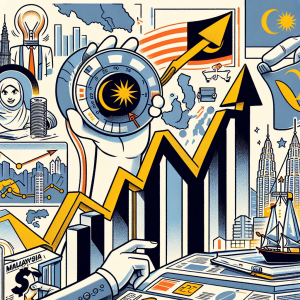Singapore’s economic outlook for 2025 has taken a significant turn as the government has downgraded its Gross Domestic Product (GDP) forecast to a range of 0% to 2%. This revision comes in the wake of ongoing global challenges, particularly the US-China tariff war, which continues to exert pressure on international trade and economic growth.
The revised forecast reflects a broader trend observed globally, where growth is projected to remain steady at around 3.2-3.3% in 2025, according to reports from the International Monetary Fund (IMF) and the World Bank. However, this figure is below the historical average of 3.7% from 2000 to 2019, indicating a slowdown in economic momentum. The IMF has pointed out that while the US economy shows signs of resilience, declines in other major economies—particularly in East Asia—are weighing heavily on global growth prospects.
Inflation remains a critical concern, with global headline inflation expected to decline to 4.2% in 2025. Yet, the path to disinflation is fraught with challenges, particularly due to persistent core inflation and the need for careful adjustments in monetary policy. Analysts warn that renewed inflationary pressures could complicate fiscal sustainability and financial stability, necessitating a balanced approach from policymakers.
Emerging markets, including Singapore, face unique challenges in this environment. The World Bank emphasizes that these regions are grappling with weak investment growth, aging populations, and geopolitical tensions. In Singapore, the impact of the tariff war is particularly pronounced, as the nation relies heavily on trade and has a significant stake in the global supply chain. The potential for further trade policy shifts and geopolitical tensions adds another layer of uncertainty, prompting calls for structural reforms to enhance productivity and resilience.
As Singapore navigates these turbulent waters, the government is urged to adopt a proactive policy mix that addresses inflation while supporting economic growth. This includes fostering global cooperation to manage the trade-offs between inflation and economic activity, as well as rebuilding fiscal buffers for sustainable long-term growth.
In conclusion, Singapore’s downgraded GDP forecast for 2025 reflects a complex interplay of global economic factors, particularly the ongoing US-China tariff war. As the nation faces significant risks and structural challenges, a concerted effort towards policy reform and international collaboration will be essential to ensure economic stability and resilience in the years ahead.





